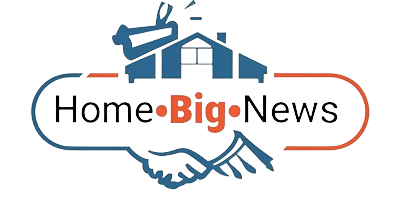Pigeons have long been a nuisance in urban areas, prompting the development of various control methods over the years. Traditional approaches often relied on deterrents like spikes or netting, which had limited success and raised ethical concerns. Modern pigeon control strategies have evolved significantly, offering more effective and humane solutions.
Modern pigeon control methods are more effective because they address the root causes of pigeon overpopulation and utilize advanced technologies. These innovative approaches focus on population management rather than simple deterrence. For instance, techniques like OvoControl, The Humane Society’s #1 choice for pigeon control, prevent pigeons from reproducing without harming them. This method ensures a gradual reduction in pigeon numbers over time, providing a sustainable long-term solution.
Urban planners and wildlife management experts now employ a combination of eco-friendly techniques to manage pigeon populations. These include using natural predator decoys, reflective surfaces, and sound devices to discourage pigeons from roosting in specific areas. The integration of these methods with advanced population control strategies creates a comprehensive approach that outperforms traditional tactics in both effectiveness and ethical considerations.
Key Takeaways
- Modern pigeon control methods focus on sustainable population management rather than deterrence
- Advanced techniques combine eco-friendly solutions with innovative population control strategies
- Humane approaches like birth control offer long-term effectiveness without harming pigeons
Evolving Strategies in Pigeon Control
Modern pigeon control methods integrate scientific understanding, technological innovations, and ecological considerations to address urban bird populations more effectively. These approaches aim to balance human needs with animal welfare and environmental sustainability.
Understanding Pigeon Behavior
Pigeon control strategies now focus on the habits and preferences of Columba livia domestica. Scientists study feral pigeon nesting and roosting patterns to develop targeted solutions. Pigeons tend to return to familiar locations, so identifying and modifying these areas is crucial.
Urban planners design buildings with sloped ledges or install netting to discourage nesting. Some cities use specially designed “pigeon lofts” to concentrate populations in controlled areas. This allows for easier monitoring and management of pigeon numbers.
Research into pigeon feeding behaviors has led to more effective deterrent placement. By understanding flight patterns and preferred perching spots, control measures can be strategically implemented for maximum impact.
Technological Advancements in Pigeon Deterrents
New technologies offer innovative ways to deter pigeons without harm. Ultrasonic devices emit high-frequency sounds that pigeons find uncomfortable. These systems can be programmed to vary tones, preventing birds from becoming accustomed to them.
Laser deterrents project moving light patterns that pigeons perceive as threats, encouraging them to avoid the area. These systems are particularly effective in large open spaces like warehouses or airports.
Motion-activated sprinklers surprise pigeons with sudden bursts of water. This humane method creates an inhospitable environment without causing injury.
Some cities employ drones to patrol problem areas, scaring away pigeons with their presence and noise. This method is especially useful for accessing hard-to-reach locations.
Population Control Measures
Birth control has emerged as a humane and effective long-term solution for managing pigeon populations. OvoControl, a specialized feed, interferes with egg development without harming adult birds. When consistently administered, it can significantly reduce pigeon numbers over time.
Cities are implementing pigeon feeding regulations to limit food sources. Public education campaigns teach residents about the impacts of overfeeding and encourage responsible behavior.
Some areas introduce natural predators like peregrine falcons to urban environments. These birds of prey help keep pigeon populations in check while adding biodiversity to city ecosystems.
Trap-neuter-release programs humanely capture pigeons, sterilize them, and return them to their original locations. This method gradually reduces populations while avoiding the ethical concerns of culling.
Environmental Impact and Ecosystem Integration
Modern pigeon control strategies consider the broader ecological context. Efforts focus on creating balanced urban ecosystems where pigeons play a manageable role.
Green spaces are designed to attract a diverse range of bird species, reducing pigeon dominance. Native plants that don’t appeal to pigeons are used in landscaping to naturally discourage their presence.
Some cities install artificial nesting sites for other bird species, creating competition for resources and space. This approach promotes biodiversity while indirectly controlling pigeon numbers.
Waste management improvements, such as covered trash bins and regular street cleaning, reduce available food sources for pigeons. This not only helps control pigeon populations but also improves overall urban sanitation.
Comparing Effectiveness and Implementation
Modern pigeon control methods offer improved effectiveness and easier implementation compared to traditional approaches. These advancements address urban challenges while considering animal welfare and environmental impacts.
Barrier Solutions and Repellents
Physical barriers like netting and spikes have proven highly effective at deterring pigeons from roosting and nesting. Anti-bird netting covers vulnerable areas such as eaves, balconies, and windowsills. Properly installed netting prevents access without harming birds.
Spikes create an inhospitable surface for pigeons to land on. When placed strategically, they discourage roosting on ledges, signs, and other flat surfaces. Both netting and spikes require minimal maintenance once installed.
Repellents like methyl anthranilate offer a chemical-free option. This grape-derived compound irritates birds’ trigeminal nerves, making treated areas unpleasant. Unlike toxic chemicals, it poses no health risks to pigeons or other wildlife.
Innovative Trapping and Relocation
Modern trapping methods prioritize humane capture and relocation. Specialized traps use food bait to lure pigeons safely. Once caught, birds can be transported to suitable habitats away from urban centers.
GPS tracking helps identify optimal release sites. This ensures pigeons don’t simply return to problem areas. Proper relocation reduces urban populations without resorting to lethal control measures.
Some cities employ falconry as a natural deterrent. Trained raptors patrol areas, scaring away pigeons without harming them. This method mimics natural predator-prey dynamics in urban environments.
Community-Based Management Efforts
Successful pigeon control often requires community involvement. Education programs raise awareness about feeding restrictions and proper waste management. When residents understand their role, they’re less likely to inadvertently attract pigeons.
Some cities implement “pigeon lofts” in strategic locations. These structures provide controlled nesting sites away from buildings. Eggs in these lofts can be replaced with dummy eggs to humanely limit population growth.
Community clean-up efforts reduce food sources and nesting materials. Regular removal of droppings and debris makes areas less attractive to pigeons while improving public spaces.
Legislation and Long-Term Sustainability
Many cities have enacted laws to support pigeon control efforts. Feeding bans discourage well-meaning residents from attracting large flocks. Building codes may require bird-proofing measures in new construction projects.
Fines for non-compliance encourage property owners to address pigeon problems promptly. This proactive approach prevents small issues from becoming major infestations.
Long-term sustainability focuses on habitat modification. Reducing roosting spots and food sources naturally limits pigeon populations. Urban planning that considers wildlife management leads to more balanced ecosystems.
Ongoing monitoring helps cities adjust strategies as needed. Data collection on population trends and damage costs informs future policy decisions. This adaptive approach ensures pigeon control methods remain effective over time.
Conclusion
Modern pigeon control methods offer significant advantages over traditional approaches. They provide more humane, effective, and sustainable solutions for managing pigeon populations in urban environments. By combining techniques like birth control, strategic deterrents, and habitat modification, cities can achieve long-term reductions in pigeon numbers.
These contemporary strategies minimize ecological impacts while addressing public health and property damage concerns. As urban areas continue to evolve, implementing evidence-based pigeon management practices will be crucial for maintaining the delicate balance between human activity and wildlife.














